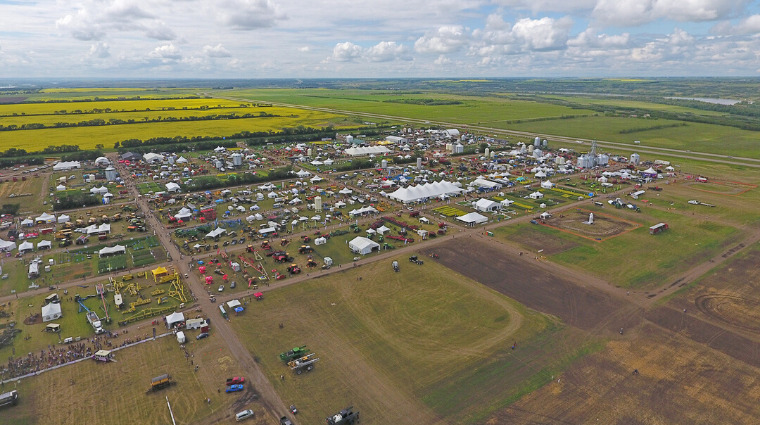
For farmers and the businesses that serve them, Ag in Motion: Western Canada’s Farm Expo, can be overwhelming, with live demonstrations of field equipment, crop test plots, interactive agribusiness product exhibits and presentations.
“On 100 acres it would be very easy for people to completely miss things,” said Kelvin Boechler. “They could wander through the event and miss exhibits or information that they’re interested in.”
Boechler is a senior research associate and project manager with the Digital Integration Centre of Excellence (DICE) at Sask Polytech’s School of Information and Communications Technology.
He explained that the show’s owner, Glacier FarmMedia (GFM), approached the team about creating an app to help people get the most out of the Saskatchewan agriculture show as well as Canada’s Outdoor Farm Show in Woodstock, Ontario.
Both events are extensive affairs. Ag in Motion takes place over three days in July, where about 450 exhibitors display their products and services to more 30,000 people at the show site near Langham, Saskatchewan. About 40,000 people attend the Woodstock event.
This makes for a lot of information to share and the perfect opportunity for an app.
Boechler explained a key feature of the app is a mapping function that tells you where you are, much like the GPS systems in cars and smartphones. This is integrated with the schedule, so if there is an upcoming presentation, the user gets a notification along with the quickest route to get there.
Visitors to the shows can download the app to their smartphones for easy access to event details, information on crop varieties and the inner workings of farm machinery – even how and when to catch a ride. One supplier used the show shuttle as a demo, equipping it with a tracker that is usually used to let producers know the location of their equipment on their farms. Through the app, they could actually try it out.
“After you walk that 100-acre site over and over again, that shuttle starts to look pretty good,” Boechler said, adding that this try-it-out feature might be incorporated in other areas.
Another feature of the app uses augmented reality to link actual field examples to equipment. In 2019, farmers could visit two canola test plots seeded by two different equipment systems. By looking at their smartphone screens through the app, they could see the equipment in action overlaid on their screens and get directions to the equipment vendors’ booths at the show.
Boechler and the DICE team also looked at other possibilities for augmented reality to add value for both farmers and vendors. They worked on a feature where users could point their smartphone at a machine (in this case, a combine) and see it overlaid with pictures or illustrations of its inner workings.
The app also helps GFM and their exhibitors, giving them valuable insights into the interests and behaviours of event attendees, such as how many people pass each booth, how many stop and for how long.
One of the challenges is that the GFM events are on rural sites. Adding 30,000+ users to an existing cell network can seriously slow down app performance, which means using minimal bandwidth is important.
“We’re attacking the cell tower saturation problem for them,” Boechler said. “One of the things we’re looking at is using something called edge computing. This means our app doesn’t have to go through the cell network.”
Learn more about DICE at: saskpolytech.ca/dice.

Published January 2020.

